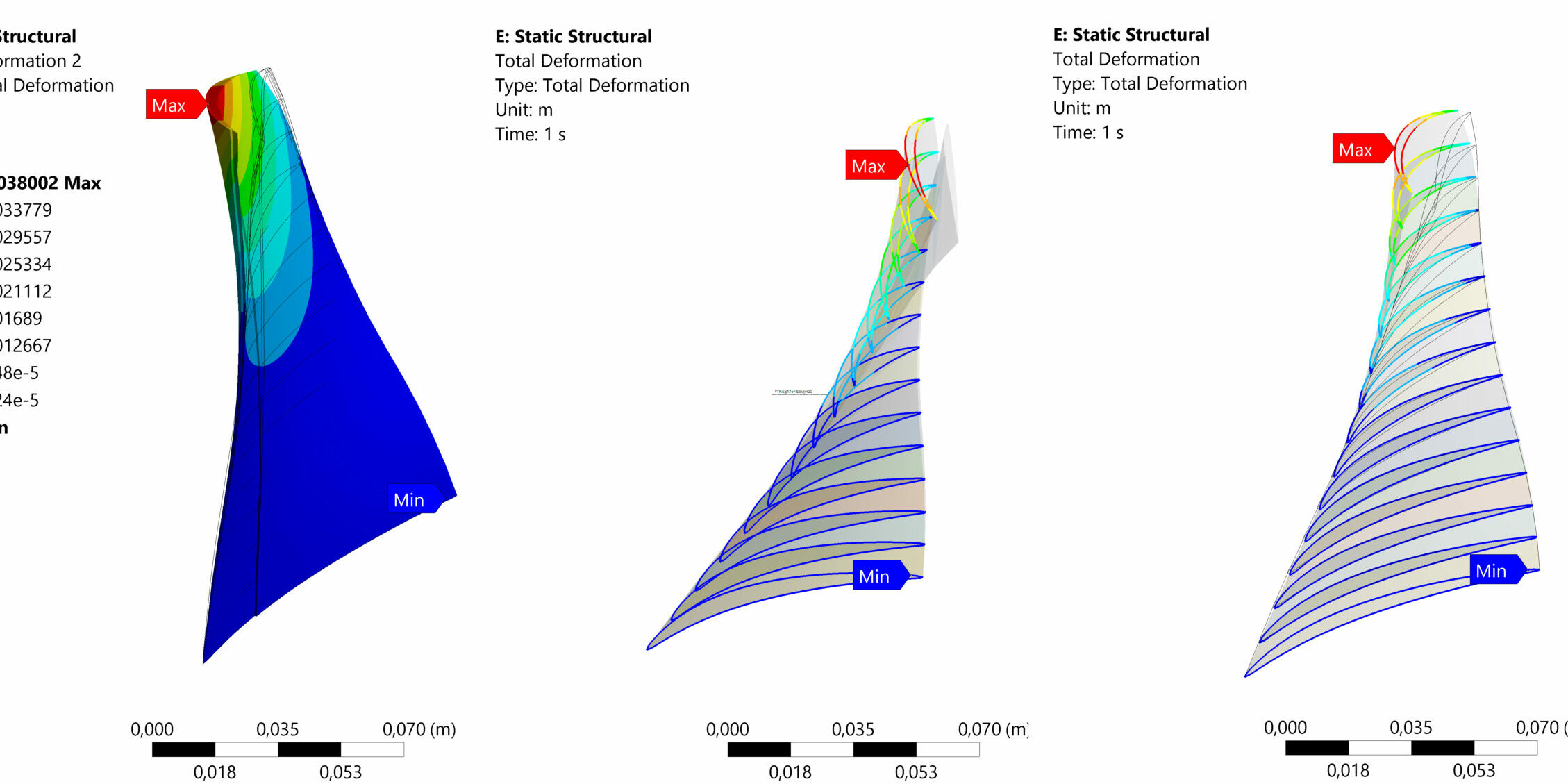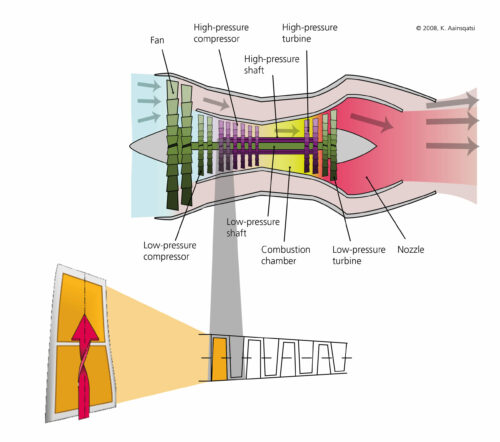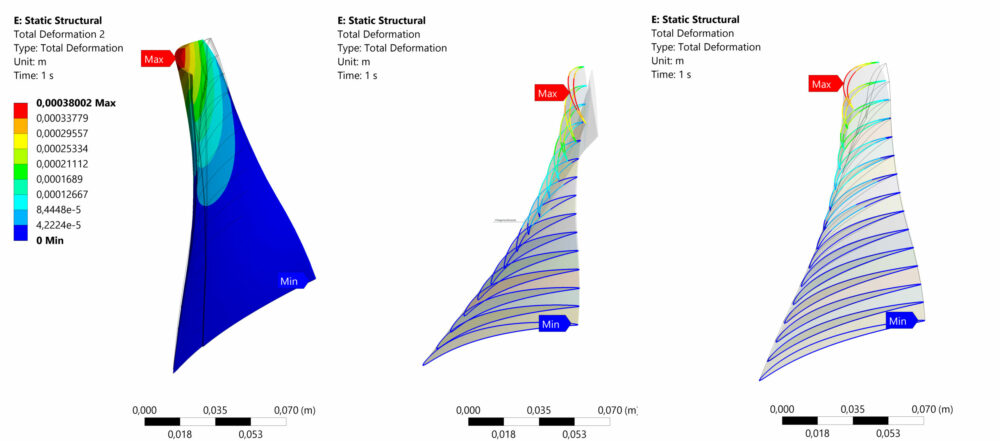When we look at how birds fly, we can see that they modify the shape of their wings during flight. They do this because they know that to be more performant, faster and, among others, get their food, they need to adapt to different flying conditions, such as those from variable winds. Aircraft engines consist of several blades acting like small wings, each of them helping to rotate each engine stage and propel the aircraft. Unfortunately, the blades of all current aeronautical engines are rigid and offer the same profile all throughout flight. This remains so despite the fact that aircraft, as birds, also encounter a wide variety of environmental conditions during their missions. As a result, during most flight phases engine blades are not operating with an ideal shape and can’t reach their best levels of performance. Since engines are a crucial component regarding aircraft efficiency, engine blades capable of adapting to different flight phases can improve overall engine and aircraft performance, all while reducing fuel consumption, toxic emissions and costs, and while becoming more environmentally friendly.
Engines and Morphing
From all the bladed engine stages, the compressor stages are the ones affecting an aircraft’s performance the most. This is because the compressor is in charge of increasing the pressure and temperature of the incoming airstream so that the airflow can reach the ideal conditions for an optimum combustion. Compressor blades are geometrically designed to offer the best performance under the most energy intensive flight phase (usually cruise or top-of-climb). Such flying conditions are called the design point conditions. In order to compensate for the effects of flying under the different atmospheric conditions of other flight phases, e.g. at different altitudes, current engines vary their rotational speed. Even though this allows to diminish losses, performance can still be improved. By taking advantage of active materials, such as piezoelectric ceramics or shape memory alloys, it is possible to design compressor blades that can change their shape during flight and offer an optimum performance also outside the design point, under off-design conditions. The potential of such morphing compressor blades has been investigated during the last years within the frame of the Sustainable and Energy Efficient Aviation (SE2A) excellence cluster, as a cooperation between DLR’s Institute of Lightweight Systems and the TU Braunschweig.
The science behind
For this purpose, a method for converting standard blade architectures into morphing blades was developed. The method takes as a reference any aerodynamic blade geometry corresponding to the design point operational shape of the selected blade and converts it into a morphing blade. For this, surface integrated actuators made of active materials and consisting of fibres or thin plates are integrated onto the blade’s surfaces. When the actuators expand or contract, they modify the blade’s shape. By taking advantage of the directional properties of the actuators, it is possible to integrate them in the blades as to achieve targeted aerodynamic shapes. Different blade shapes affect how the airflow flows through the stage, with for example different incidence and camber angles of the blades leading to different pressure ratios and mass flow rates – both tightly related to the stage’s performance. As a result of the project, it has been shown that it is possible to modify the performance behaviour of the stage in a targeted manner, also under the very strong centrifugal forces experienced inside the engine. Through the further development of this technology and its implementation on future engine blades, it will be possible to further increase an engine’s efficiency, moving one step forward towards a greener and more environmentally friendly aviation.









